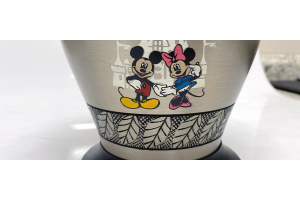
Scattering ashes on the sea has become a much more popular method of burial. It’s not just that it is much less expensive. Traditional values that used to require a land burial are changing. In times past, most families would live in the same area where they were born for their whole life.
Generations were buried in the same cemetery, often in a family plot. It was common to visit the graves of their family members on a regular basis. In the 21st century, things have changed tremendously. Today, in much of the country, it is unusual for a family group to live in the same location as their parents. The current generation is much more fluid. A family may live in several different areas in their lifetime - nowhere near the graves of their loved ones. Ties to land burial are not nearly as strong as before.
However, after the ashes are scattered, while we are there in the boat watching the ash cloud disperse, as the rose petals sail off in the breeze, and the seagulls whirl down to check them out, it is like an emotional release as the family remembers their good times with the deceased.
It is as though the sea, along with the sea life – dolphins, sea lions, seagulls, pelicans and all sorts of sea birds, washes away the sadness and wraps the family in a blanket of peace. Captain Ken Shortridge Ashes on the Sea






